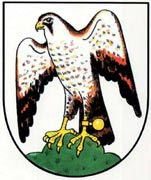




http://www.carlsbadmagazine.com/Stories/windmaster.html
Windmaster, Shadowcaster By Wendy Hinman | Photography by Sharon AnthonyCarlsbad is a critical roost for the California brown pelican
The Pacific bottlenose dolphin and the California brown pelican are the most intimate friends of the Carlsbad surfer. They share sunrises and sunsets, the exhilaration of waves and the drama of wind. They are three species of residents who understand unwritten right-of-ways. One local surfer once wrote a poem “Windmaster, Shadowcaster” and when it was read in class other surfers, just at the title, could close their eyes and see their winged companions rise and fall with the undulation of the waves.

There have been moments, however, in environmental history when the California brown pelican (Pelecanus occidentalis californicus, a subspecies of the greater brown pelican) and humans did not have such a symbiotic relationship. The pelican bordered on extinction. In the ’60s and ’70s, the pesticide du jour for the California farmer was DDT. This absorbed into the watershed, reached the sea and entered the food chain. DDT is fat-soluble and does not break down easily. So much so, that with each link on the contaminated chain, the concentration of poison increased. By the time pelicans were tainted from anchovies and sardines, the DDT levels were devastating.

The poison didn’t kill the birds, but messed up their calcium metabolism, which resulted in thinning their eggshells. These shells could not stand the bird’s weight during incubation. Nesting was producing little. The Environmental Protection Agency banned DDT in 1972. The more healthy pelicans in the Gulf of California—where watersheds contained little or no DDT—were producing, and the species has made a fabulous comeback.The brown pelican is teetering on the edge again, this time of dropping off the endangered species list (it was put on the federal list in 1970 and the state list in 1971). This is good news, but this gallant bird still has rocks in its path, or actually, not enough.
According to the National Park Service, whose jurisdiction includes the vital nesting sites on West Anacapa and Santa Barbara Islands, “California brown pelicans still face several threats. Breeding populations and productivity vary dramatically yearly, depending on climatic and oceanographic conditions, which affect food availability and abundance. Other threats include disturbance of roosting and nesting birds, oil spills and other pollution, entanglement with hooks and fishing lines, and disease outbreaks resulting from overcrowding at winter roosts. Nesting and roosting birds are very sensitive to human disturbance. Pelicans are affected by ancillary fishing activities, including the presence of vessels, noise and lights near roosting and breeding areas.”
If nesting colonies are continually disturbed, the pelicans will abandon those sites. Human encroachment has caused this abandonment north of the Channel Islands and from the islands of San Martin and Todos Santos in Mexico. The Coronado Islands are still important breeding spots. A typical clutch has three eggs, but rarely do all three reach adulthood. It is after the hatchlings leave the nest that learning to fish and a safe roost become imperative.
The decrease of roosting sites makes Carlsbad a critical area. Coastal development—who doesn’t want to live by the beach?—has decreased roosting spots from the tip of Baja to British Columbia. The U.S. Fish and Wildlife Service has observed, “Brown pelicans roost communally, generally in areas that are near adequate food supplies, have some type of physical barrier to predation and disturbance, and provide some protection from environmental stresses such as wind and high surf. The brown pelican uses breakwaters, jetties, sand spits and offshore sand bars extensively as daily loafing and nocturnal roost areas.”
Rest is important for these gliders whose wingspans can reach up to seven feet. Riding the thermals can be thrilling, but tiring. Pelicans are not beach bums; they don’t just eat, sleep and breed. They need to do some serious preening. Meticulous groomers, the pelicans use their beaks, with their egg tooth on the end and heads to spread oil from their uropygial (preening) gland on their rump to all their feathers. The oil keeps their feathers water resistant and keeps their bodies warm.
The pelicans at Buena Vista are usually the American white pelican who are more amenable to fresh water. But they also frequent Batiquitos. They are a bit larger than their Californian cousins with a wingspan of up to nine feet. They also differ from the browns in that they scoop fish out of the water with their enormous gular. They sometimes fish cooperatively, forming circles and dropping their bills underwater to concentrate a school of fish.
The browns, by comparison, dive for fish sometimes from great heights. Their gulars can hold up to three gallons of fish and water, which they will drain off before swallowing the fish. The brown pelican also has dramatic changes in breeding plumage. Their gulars change to a bright red-orange, their heads become a yellow-white and their hind neck becomes dark brown.

Carlsbad has been a gracious host so far, but we need to be careful that we don’t love our pelicans to death. Ironically, photographers, birders and unsuspecting tourists can disturb roosting colonies the most. The word is to admire them from afar. Or, if you are not a surfer, think about paddling out. Out on the waves, to a line of windmasters, shadowcasters, you are a mere speed bump and they will get quite close to you as they sweep past.











































